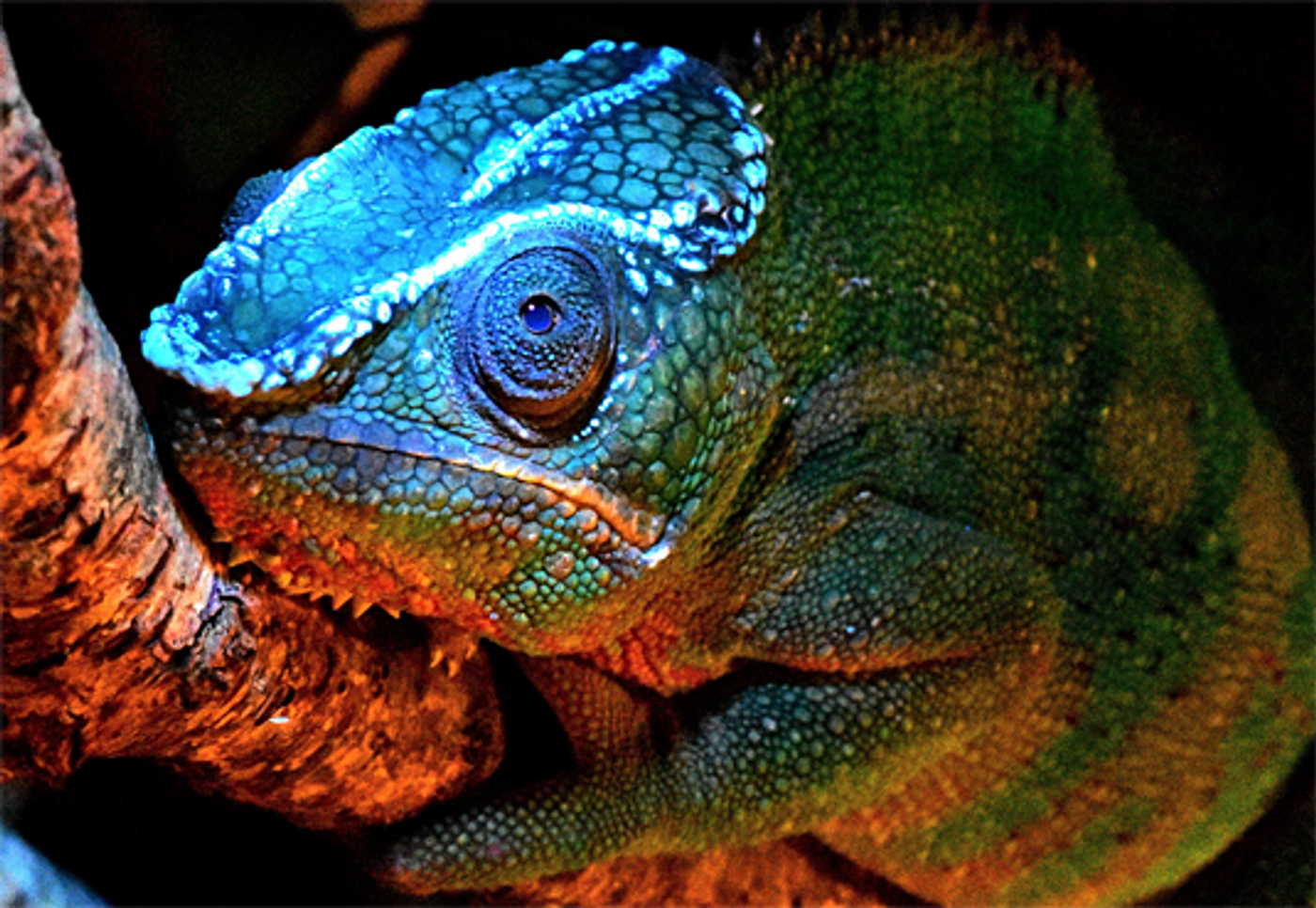Unexpected Fluorescence Found in Chameleons
Chameleons are perhaps one of the world’s most widely-recognized lizard species, primarily because of their renowned camouflage capabilities. On the other hand, researchers from the Ludwig Maximilian University of Munich have stumbled upon yet another chameleon-centric oddity.
Image Credit: David Prötzel (ZSM/LMU)
In a new study published in the journal Scientific Reports, the researchers detail how the small, bony tubercles on the chameleons’ heads fluoresce under ultraviolet light. Furthermore, these fluorescent displays differed from one species to the next with males sporting more fluorescing patterns than females.
“We could hardly believe our eyes when we illuminated the chameleons in our collection with a UV lamp, and almost all species showed blue, previously invisible patterns on the head, some even over the whole body," explained study lead author David Prötzel.
Related: South Florida's cold spell caused iguanas to fall out of trees
So what was causing these astonishing fluorescent effects? As it would seem, the bone under their skin may have been the culprit. Micro-CT scans and tissue analyses revealed previously-unknown features and provided insight into the extraordinary situation.
Researchers have long known that bone fluoresces under ultraviolet light, but what they didn’t realize was that chameleons sport clear patches in the skin on their heads. These clear points in the skin allow ultraviolet light to penetrate and shine directly on the bony tubercles on the reptiles’ skulls.
No one fully understands why chameleons possess this ability just yet, but the researchers suggest that it might provide a way of distinguishing one species or individual from another.
Considering that researchers don't observe fluorescent capabilities in land animals very often, this is indeed an unusual situation. That said, fluorescence in land creatures could be more common than we think and additional research may yield surprising results.









